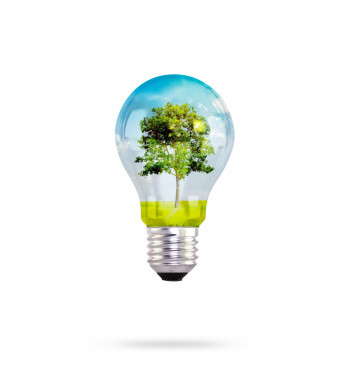
Nature and progress go hand in hand to give new life to the Earth thanks to the development of renewable energy. Renewables have grown rapidly in recent years, driven by policy support and sharp cost reductions for solar photovoltaics and wind power in particular. The electricity sector remains the brightest spot for renewables with the strong growth of solar photovoltaics and wind in recent years, building on the already significant contribution of hydropower. But electricity accounts for only a fifth of global energy consumption, and the role of renewables in the transportation and heating sectors remains critical to the energy transition.
Renewables, including solar, wind, hydro, biofuels, and others, are at the center of the transition to a less carbon-intensive and more sustainable energy system.

Solar
Power: Humans
have been harnessing solar energy for thousands of years—to grow crops, stay
warm, and dry foods. Solar energy systems don’t produce air pollutants or
greenhouse gases, and as long as they are responsibly sited, most solar panels
have few environmental impacts beyond the manufacturing process.
On a
smaller scale, we can harness the sun’s rays to power the whole house, whether through PV cell
panels or passive solar home
design. Passive
solar homes are designed to welcome the sun through south-facing windows and
then retain the warmth through concrete, bricks, tiles, and other materials
that store heat.
Geothermal Heat Pumps: Geothermal technology is a
new take on a recognizable process, the
coils at the back of your fridge are a mini heat pump, removing heat from the
interior to keep foods fresh and cool. In a home, exchange pumps use the constant
temperature of the earth (a few feet below the surface) to cool homes in summer
and warm houses in winter, and even heat water.
Biomass
Energy: Biomass is organic material
that comes from plants and animals, and includes crops, waste wood, and trees.
When biomass is burned, the chemical energy is released as heat and can
generate electricity with a steam turbine. Biomass is often mistakenly
described as a clean, renewable fuel and a greener alternative to coal and
other fossil fuels for producing electricity. However, recent science shows
that many forms of biomass especially from forests produce higher carbon
emissions than fossil fuels. There are also negative consequences for
biodiversity. Still, some forms of biomass energy could serve as a low-carbon
option under the right circumstances. For example, sawdust and chips from sawmills
that would otherwise quickly decompose and release carbon can be a low-carbon
energy source.





